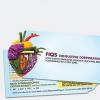Opinions vary somewhat,eg -
There’s also the balance between cost and quality of data. If you sample frequently (i.e. every day), it obviously costs more in testing and employee time, but you have much better oversight of what’s going on in your plant. If you test less often (i.e. weekly), you save money, but you stand a good chance of missing “spike events” or not being able to effectively problem solve the ones you do find. As a start, testing at least three times per week is highly recommended. Once you establish a consistent baseline, you can cut back to weekly.
Finally we come to acceptable results. In the lab an unacceptable air count is >15 cfu per 15 minutes exposure, but that’s in a laboratory. We wouldn’t expect to achieve that in particularly dusty areas in a plant. In that case, a good count would be <20 cfu per 10 minutes exposure. Remember, though, it’s more about baseline and spikes than good numbers and bad numbers.
http://www.deibellab...-in-food-plants
----------------------------------------------------------------------------
Sedimentation or settle plates are the most primitive method for sampling airborne microorganisms. A Petri dish containing a suitable agar is exposed to the atmosphere and the agar medium will collect bacteria-laden particles that eventually settle by gravity. It is a passive, non-volumetric method and imprecise by over-representing larger particles due to their rapid settling rate.
This method is inefficient for collecting small particles because air turbulence around a plate can affect the results and small particles may never settle. In order to counteract this air turbulence effect, the plate has to be left out longer, which can cause desiccation. Agar drying out leads to poor bacterial growth and reduces the viable count of stress-sensitive microorganisms. Settle plates are also impossible to validate because there is no way to measure the volume of air sampled.
https://www.foodqual...1/?singlepage=1
------------------------------------------------------------------------------------------------------------
Sedimentation techniques, referred to as passive air sampling, do not give an assessment of the number of micro-organisms in the air, only those that are of a sufficient size and weight to sediment to the surface in the exposure period. The agar medium used should be chosen to enable the growth of whatever organisms are of concern, however, it should be ensured that items taken into the production area should not form a hazard to the food products. Whilst settle plates will give an indication of the number of micro-organisms falling into product, they can only do this for a single time period and give no indication of the source of the airborne micro-organisms. To understand the real risk to the product, the airflows in the processing area and the microbial sources need to be established.
Total viable counts can range from 10^1 - 10^4 /m 3 and yeasts and moulds can range from 10^1 -10^3 /m 3 in different food factories and even for RTE high risk environments, the count in the high risk area can be similar to that outside the factory – though the flora is likely to be different! Verification standards for ambient air are thus very difficult to universally set and can only be established for a particular factory and then only if ‘normal’ conditions (no cleaning being undertaken, no open doors, fans working, no excessive people movements, no non-typical process conditions etc) can be guaranteed.
Ambient air sampling is thus best for thoroughly understanding the transfer vectors and sources of micro-organisms that could lead to the airborne contamination of microbiologically sensitive products.
 Microbial Air-Sampling.pdf 427.38KB
337 downloads
Microbial Air-Sampling.pdf 427.38KB
337 downloads
---------------------------------------------------------------------------------------------------------
APHA recommends the following standards for aerobic plate count in the air of food processing areas : 90 cfu/m3 when evaluated by air sampler technique and 30 cfu /cm2/week when evaluated by the culture settling plate technique, using plate count agar as culture medium.
 micro,air quality pf process areas in dairy plant.pdf 489.63KB
288 downloads
micro,air quality pf process areas in dairy plant.pdf 489.63KB
288 downloads
---------------------------------------------------------------------------------------------------------------


















